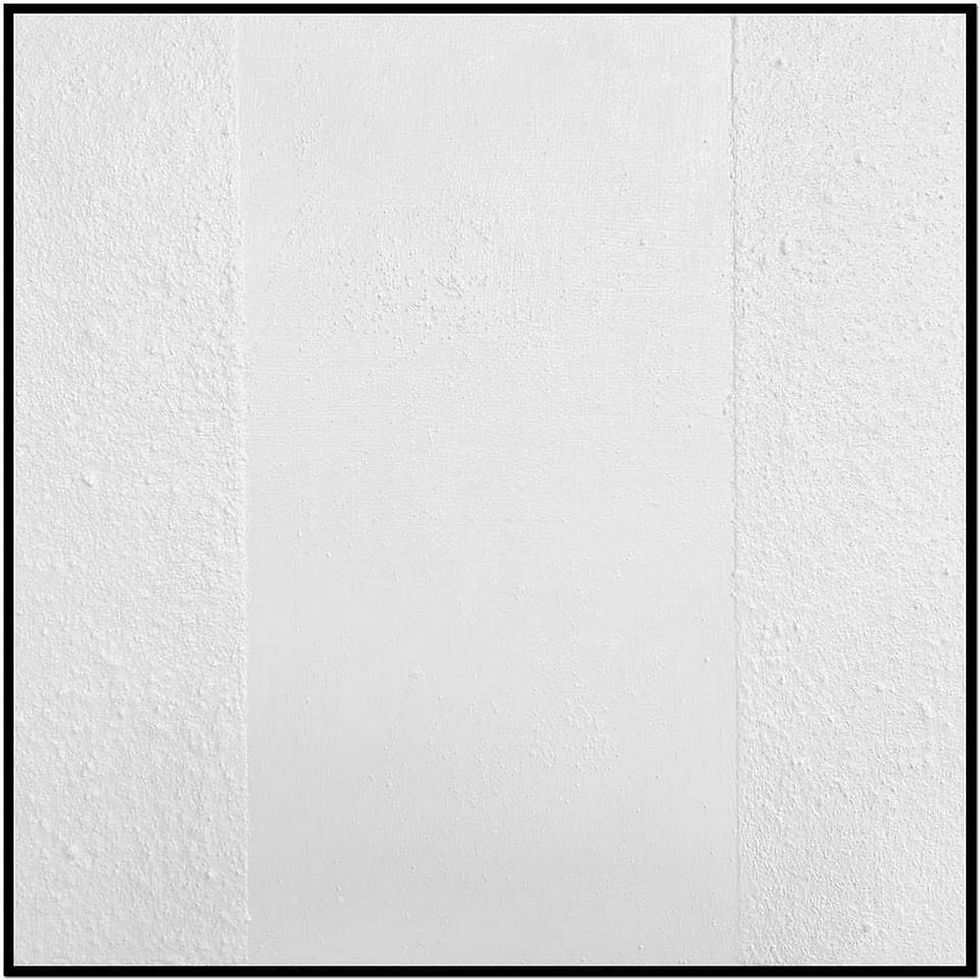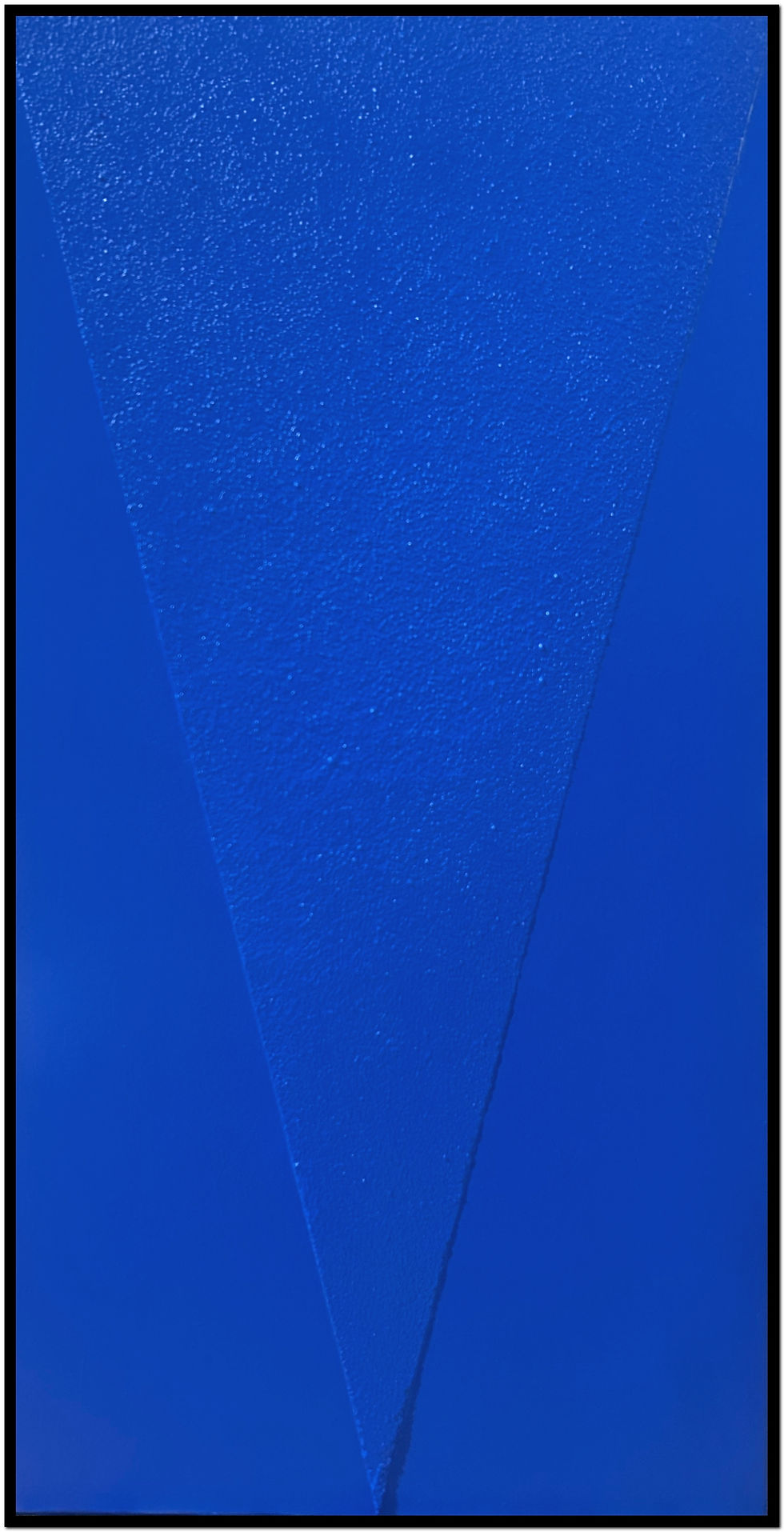Sergio Giannotta
- Anna Lilli Garai
- May 27
- 3 min read
Sergio Giannotta’s work edges into a quiet kind of intensity. Using oil, acrylic, and cement, he creates layered surfaces that blur painting and sculpture—slow to build, but deliberate. The textures do the talking: thick, rough zones meet smooth, meditative fields, often in near-monochrome. That restraint opens up more than it closes down. Giannotta treats materials like collaborators, letting them push back, shift the process, add tension. His approach is thoughtful without being over-controlled, and each piece holds its own balance between presence and suggestion.


Q: You plan your pieces carefully. What’s satisfying about working that way?
A: For me, planning is a form of respect toward the creative process. It doesn’t mean rigidity, but rather preparing fertile ground where intuition can emerge and take shape. Sketches, notes, long observations of materials—all of these contribute to a preliminary structure. The real satisfaction comes when, despite having a clear path, something unexpected happens along the way. That moment—between what was envisioned and what reveals itself—is where I feel the work begins to speak its own truth.
Q: Your work sits between full and empty. What keeps you coming back to that in-between space?
A: That in-between space is where I feel most honest in my work. Fullness can become overwhelming; emptiness, if absolute, can be paralyzing. But that unstable, imperfect, often fragile space between the two is where the most authentic things happen. It’s a space of listening, of tension and breath, where the gesture becomes not just formal, but existential. There I can work with presence and absence, with what is seen and what remains implied. It’s like walking a tightrope—every step is conscious, every balance is earned.

Q: Cement, oil, acrylic… your materials aren’t shy. How do they guide what you make?
A: These materials have strong personalities, and that’s exactly why I’m drawn to them. They don’t submit easily—they demand patience, attention, and sometimes negotiation.
Cement, with its weight and roughness, makes me reflect on solidity and gravity. Oil has a slower, more meditative temporality. Acrylic is impulsive and direct, often accompanying my most instinctive gestures. Each one suggests different paths—sometimes conflicting ones. I choose them for their voices, for what they can express even without me. When I combine them, it’s like building a conversation between distinct, even contradictory, languages. And often, it’s within that tension that the work comes alive.
Q: You keep color minimal. What does that open up for you?
A: Limiting color is a choice born from the desire for focus. Monochrome—especially blue—offers a vastness that more vibrant colors might dilute. Blue has a contemplative, almost spiritual quality: it’s deep, silent, capable of holding both light and shadow.
It allows me to work through subtraction, through layering and vibration. By reducing the color palette, I’m forced to find expression in texture, material, gesture.
It’s like playing an instrument with a single string—every variation, every subtle shift becomes essential.
Minimal color isn’t a restriction, but a threshold that leads to deeper perception.

Q: Your work feels somewhere between painting and sculpture. Is that something you aim for, or does it just happen?
A: It’s not something I consciously aim for—it’s more of a natural consequence of how I think and relate to material. When I work, I’m not trying to “paint” or “sculpt.” I simply follow what the work asks of me. Sometimes the surface rises, the color thickens, the material demands volume. The work doesn’t want to stay confined—it seeks another dimension. In that sense, my work becomes a threshold, a crossing point between mediums. More than an intention, it’s an act of trust—letting the work find its own way of existing.
Q: What kind of silence are you looking for when you make something?
A: I look for a deep silence—not merely the absence of sound, but an inner condition. A silence that allows me to connect with the material, with time, and with my most authentic gaze. It’s a silence that can hold questions, doubts, and waiting. Sometimes it arrives easily, other times I have to build it—layer by layer, just like I do with my pieces. It’s never an empty silence, but a space for listening. When I find it—or maybe when I approach it—I feel the work can begin, because something inside me has stopped shouting and started to whisper.


